Lugbara People and their Culture
Who are the Lugbara People in Uganda? The Lugbara people are an ethnic group who live mainly in the West Nile region of Uganda and in the adjoining area of the Democratic Republic of the Congo (DRC).
They speak the Lugbara language, a Central Sudanic language similar to the language spoken by the Madi, with whom they also share many cultural similarities.
They are also found in South Sudan where they are known as Mundu and other names.
The cultural symbol of the Lugbara is a leopard.
They are the predominant keepers of guinea fowl in Uganda. Lugbara occupy the West Nile region of Uganda and Arua, Maracha, Yumbe and Koboko districts of Uganda to be specific.
The Lugbara are divided into many dialects which are easily understandable to each other. These include; Ayivu, Maracha, Terego, Vurra and Aringa. Tribes related to the Lugbara in dialect include Madi and Kakwa.
In early days of 1874 the North Eastern side of the Democratic Republic of Congo, a faction of the Lugbara were called “The Naked People”, due to their attitude towards clothing.
Most women did not wear shirts and many of them did not wear even dresses, but they were covered with grass skirts or leaves. Taller than many Congolese, the Lugbara men are great hunters as well, using powerful bows with long arrows that have fishing hooks type tips.
This ethnic group straddles the common border between Uganda and the Democratic Republic of Congo with the majority of their population in the Congo side of the border. Some live in South Sudan.
History of the Lugbara People
The Lugbara came under colonial rule in 1900, as part of the Congo Free State. Arab slavers were active to the north and west during the nineteenth century, but the Lugbara escaped actual slave raiding because of their terrain and their military fierceness. Belgian administration was slight—and ceased upon the death of King Leopold II.
The Lugabara were then handed over to Anglo-Egyptian Sudan, after which Lugbara country was harassed by European elephant hunters until it was transferred to the British administration of Uganda in 1914, as part of the new West Nile District.
After the independence of Uganda in 1962, the Lugbara were largely ignored during the first regime of Milton Obote, offered many favors by Idi Dada Amin (who came from West Nile District), and subjected to brutal near-genocide under the second Obote regime.
Today the Lugbara population is certainly far less than in the early 1950s, and their social economy and organization have altered markedly from their preindependence form.
Economy of the Lugbara
They are settled subsistence farmers. Cassava is now the traditional staple. They also grow millet, sorghum, legumes, pigeon peas and a variety of root crops.
Before cassava was introduced to the Lugbara to manage famine when the cereal [millet and sorghum] failed due to drought in the 1960s, millet and sorghum used to be their staple food. Chicken, goats, and at higher elevations, cattle are also important.
Groundnuts, simsim[sesame], chick peas and sweet potatoes are also grown. Maize is grown for brewing beer, and tobacco is an important cash crop. New emerging crops are avocado, pineapple, and mangoes.
Traditionally, local exchange of surplus foodstuffs was in the form of gifts between kin and barter with others. Small local weekly markets came into being during the 1920s, with the introduction of cash, maize (used for beer brewing), and consumer goods such as kerosene, cigarettes, and cloth. (As late as the 1950s, women wore only pubic leaves and beads, and elder men, animal skins.)
The division of labor is sharply defined. Men and women share agricultural tasks, the men opening the fields and the women doing most of the remaining work. Men hunt and herd cattle; women do the arduous and the time-consuming everyday domestic tasks.
Formerly, men were responsible for the physical protection of their families and for waging feuds and war. Men hold formal authority over their kin, but older women informally exercise considerable domestic and lineage authority. Land is held by lineages, as land is traditionally not sold or rented. Women are allocated rights of use by their husbands’ lineage elders.
Marriage
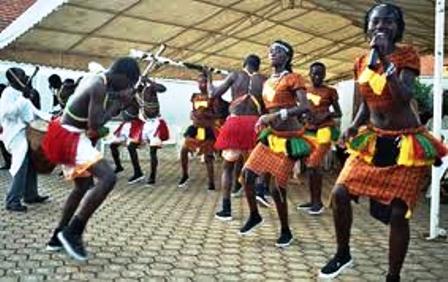 lugbara traditional dancers
lugbara traditional dancersThe Lugbara recognized patrilineal descent, claiming a single origin from two brothers—Heroes—who entered the country from the north, found and cured many leper women, and then married them, their sons becoming the founders of some sixty clans. Genealogies from the founders to the present are usually between nine and twelve generations in depth.
Marriage is forbidden between members of the same clan or with a man’s or woman’s mother’s close kin. It is affected by the transfer of cattle bride-wealth from the groom’s to the bride’s close patrilineal kin.
Polygyny is a male ideal, about a third of the men having more than one wife; most secondary wives, however, are those inherited from their brothers or fathers’ brothers.
Divorce, which is relatively unusual, may traditionally be made only by the husband, the cattle being returned except for one beast for each child born; the most common grounds are adultery and the wife’s barrenness.
The household is a close-knit and mutually dependent unit. The socialization of children is traditionally by parents and older siblings. There are no forms of initiation at puberty, but children of about 6 undergo forehead cicatrization and excision of the lower four incisors.
Political setup of the Lugbara
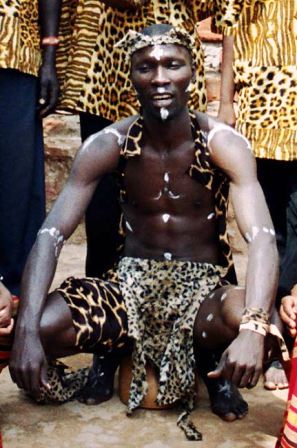
In the early days, the Lugbara were a mainly chiefdom based community. They did not have kingdoms and kings presiding over them as like other ethnic groups in Uganda. They mainly had chiefs who were their leaders.
They formed friendly alliances with neighbouring chiefdoms so as to ensure their security against attacks from other ethnic groups.
The earlier Lugbara did not have soldiers or an army in their chiefdoms. Every able bodied man had the duty to protect his village hence all able bodied men were automatically considered a soldier though this was not a permanent duty.
The Lugbara were originally animists as their mythology attests. However Christianity is now the predominant religion amongst them today with Islam another major religion.
Religion and Expressive Culture
The Lugbara recognize a single deity, Adroa (also known as Adro), who created the world and its inhabitants. Two Heroes then formed Lugbara society itself. Beneath Adroa are two categories of spiritual beings: the spirits and the ancestors.
Spirits are known as adro, a word of complex meaning that essentially refers to a source of power. The spirits are of many kinds and have different degrees of power over human beings.
First are the numberless spirits of sickness and disaster, their motives unknowable to the living (although female diviners are thought able to make some contact with them). Second are the spirits that inhabit the bodies of the living, together with the soul.
The spirit in the body leaves at death, dwelling in the forests with an immanent aspect of the Adroa. These spirits take the form of small human beings, and both they and Adroa kill on sight.
Ancestors who left male children are “ghosts”; they send sickness to their descendants as response to disobedience. Sacrifices of meat, blood, and beer are offered to the ghosts individually, by elders. The ancestors without male children form a collectivity to which grains and milk are offered, as do the spirits.
Living elders act as priests for their lineages and also as oracles who discover the identity of the ghosts sending sickness.
Today many people attend government and mission clinics to ensure physical healing, but the clinics cannot discover the underlying mystical causes of sickness. Diviners, mainly women, are possessed by—and can contact—spirits in order to ascertain the causes and suggest means of removing them.
Prophets have appeared at moments of crisis; they bring with them extremely powerful spirits who give divine messages regarding the reorganization of traditional systems of authority. The most famous was the prophet Rembe, who led an anti-European healing cult in 1916. Lugbara also believe in specters of the recently dead.
The most important rites of sacrifice are those to the dead, especially senior men and women; rites of birth and marriage are little elaborated. Sacrificial rites are a central aspect of the authority of the elders, who control them and so gain sanction for the authority given them by their dead forebears.
Death rites, mainly in the form of death dances, are highly elaborate; they reestablish the disturbed distribution of lineage authority. There is only a vaguest belief in a land of the dead, but none in a journey to it after death.
Lugbara beliefs in witches and sorcerers, which are clearly distinguished, are strong. Witches are men, especially elders, who pervert their legitimate lineage authority for their own selfish ends.
Sorcerers—women and young men—lack legitimate authority and are thus thought to use “medicines” and poisons. Both witches and sorcerers are feared but can be dealt with by diviners, who can identify them. Witchcraft is linked to the lineage system; as that system has weakened in the late twentieth century, beliefs in sorcery have been strengthened.
Christian missions (Italian Verona Mission and the Africa Inland Mission) entered the area soon after 1914 but made few converts until the latter half of the century; today most Lugbara are Catholics. There is little adherence to Islam except for the “Nubi” in the few small townships.
Other Pages of Interest
Kenya Art | Kenya Festivals | Kenya Gender Issues | Kenya Gestures | Kenya Greetings | Kenya History | Kenya Language | Kenya Literature | Kenya Modern Culture | Kenya Music | Kenya National Anthem | National Dress Cord of Kenya | Kenya People | Kenya Respect | Kenya Taboos | Kenya Television and Culture |
Famous and well known Lugbara include Dorcus Inzikuru, the 3000-metre steeple chase world champion in Helsinki 2005 and Jackson Asiku, the previous Commonwealth boxing light-weight champion. Another important Lugbara is John Munduga, an international boxer.Idi Amin Dada's mother Aisha Aate is said to belong to the Okapi/Lenya Clan of the Lugbara tribe in the D R Congo.
Recent Articles
-
Garam Masala Appetizers ,How to Make Garam Masala,Kenya Cuisines
Sep 21, 14 03:38 PM
Garam Masala Appetizers are originally Indian food but of recent, many Kenyans use it. Therefore, on this site, we will guide you on how to make it easily. -
The Details of the Baruuli-Banyara People and their Culture in Uganda
Sep 03, 14 12:32 AM
The Baruuli-Banyala are a people of Central Uganda who generally live near the Nile River-Lake Kyoga basin. -
Guide to Nubi People and their Culture in Kenya and Uganda
Sep 03, 14 12:24 AM
The Nubians consist of seven non-Arab Muslim tribes which originated in the Nubia region, an area between Aswan in southern
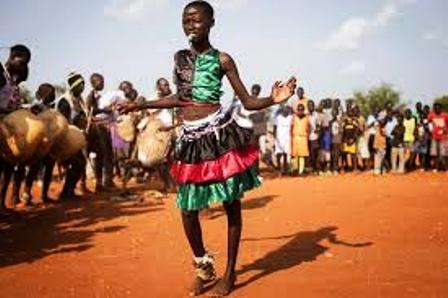
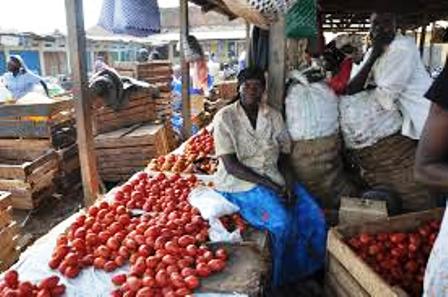
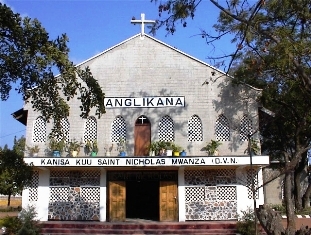







New! Comments
Have your say about what you just read! Leave me a comment in the box below.